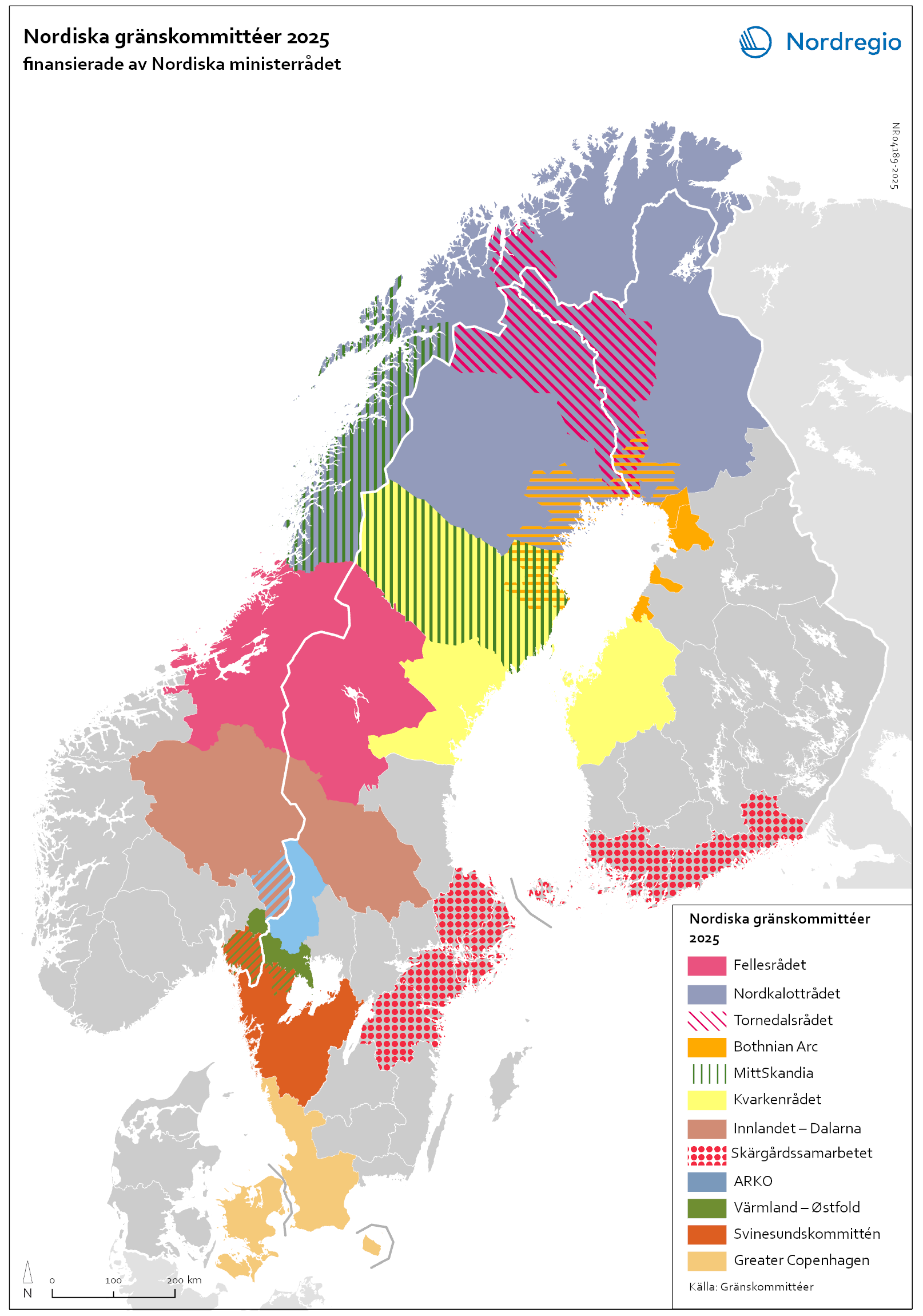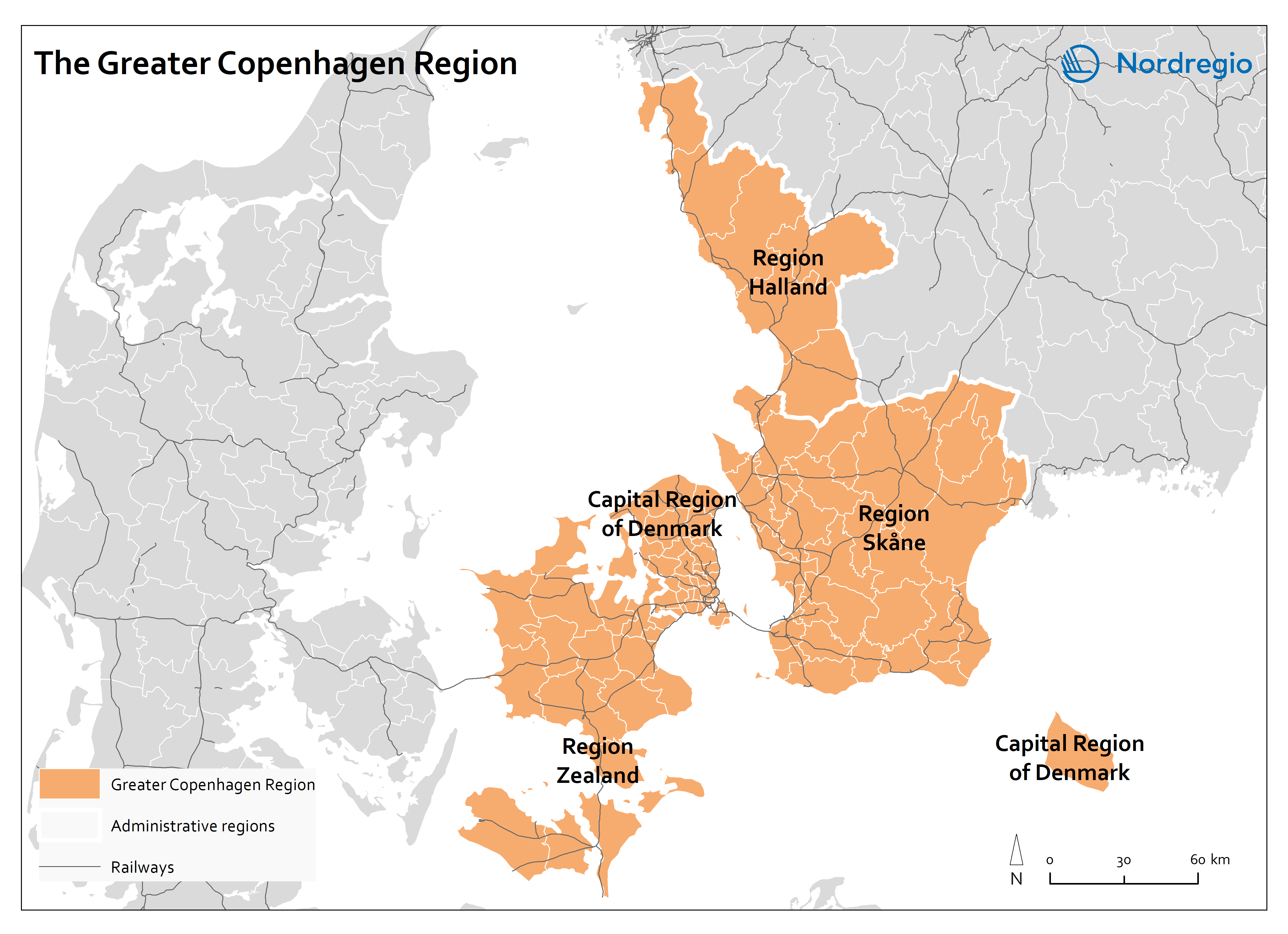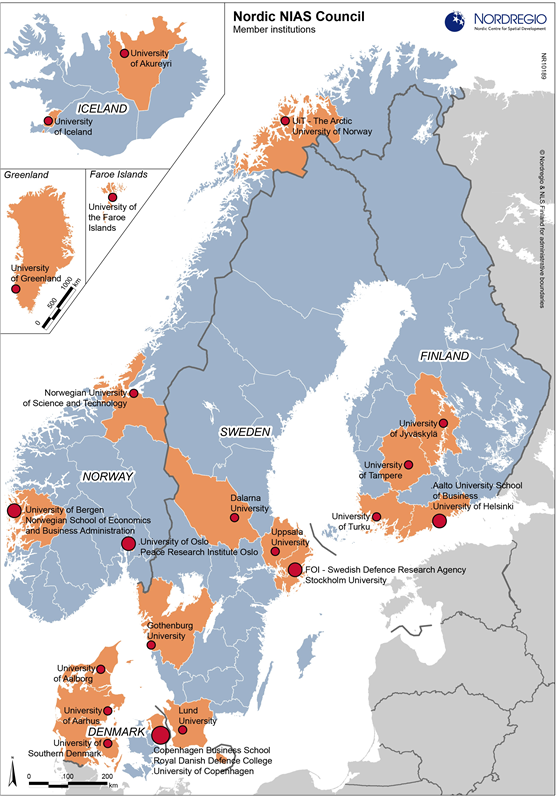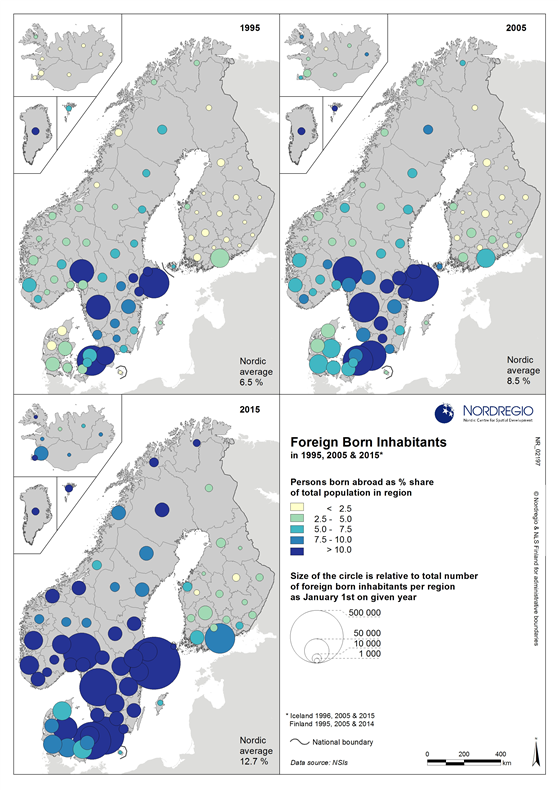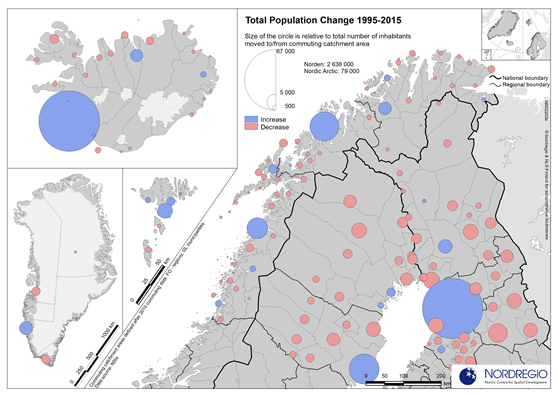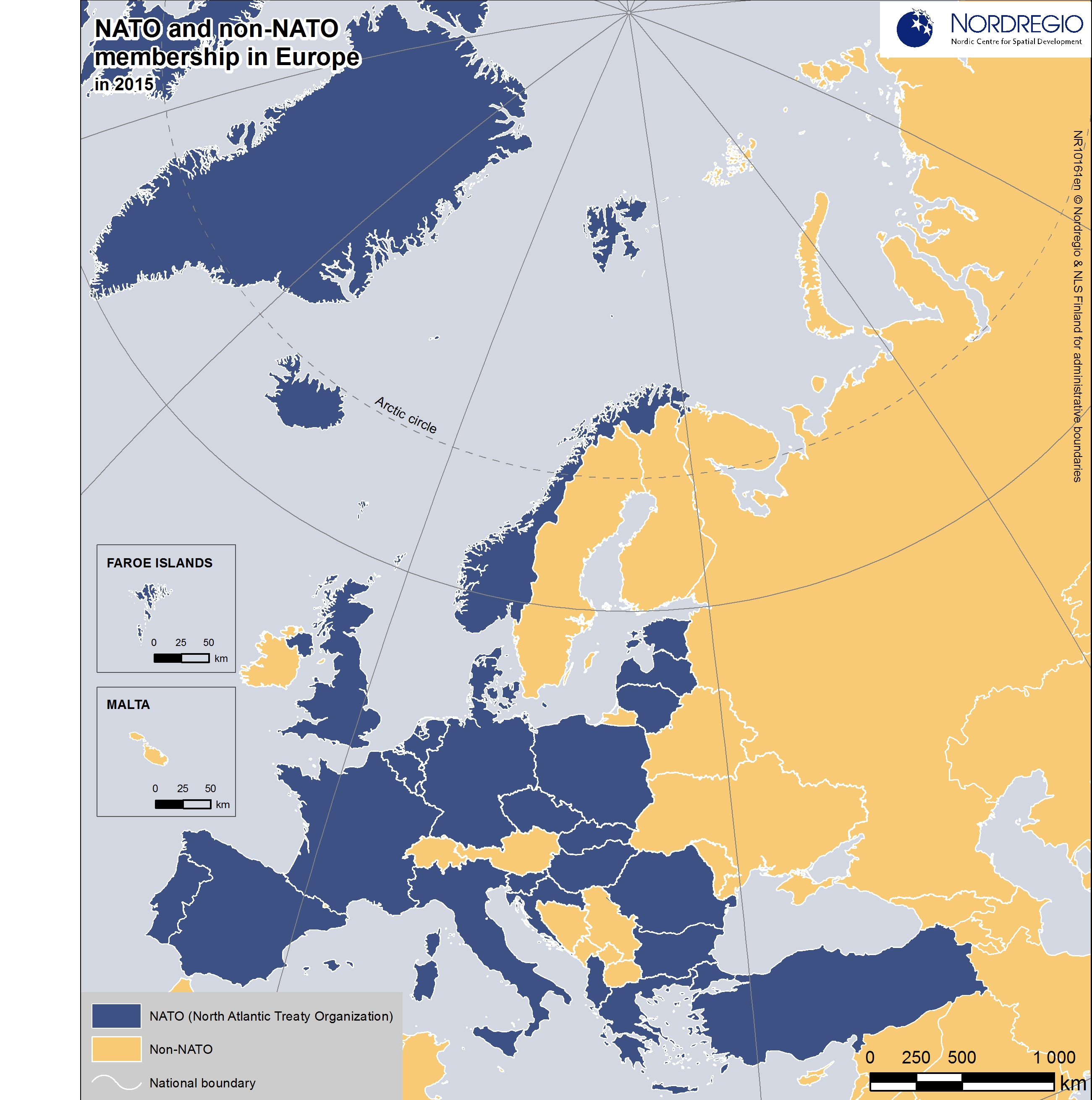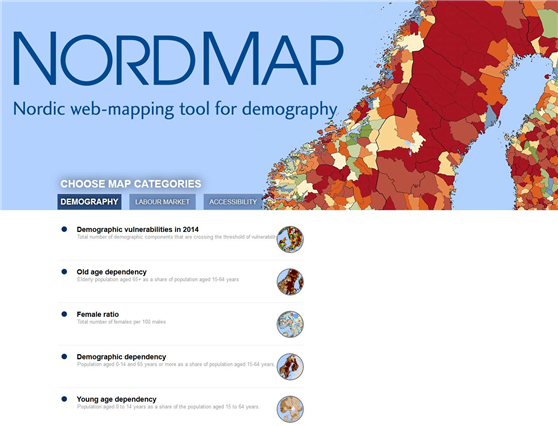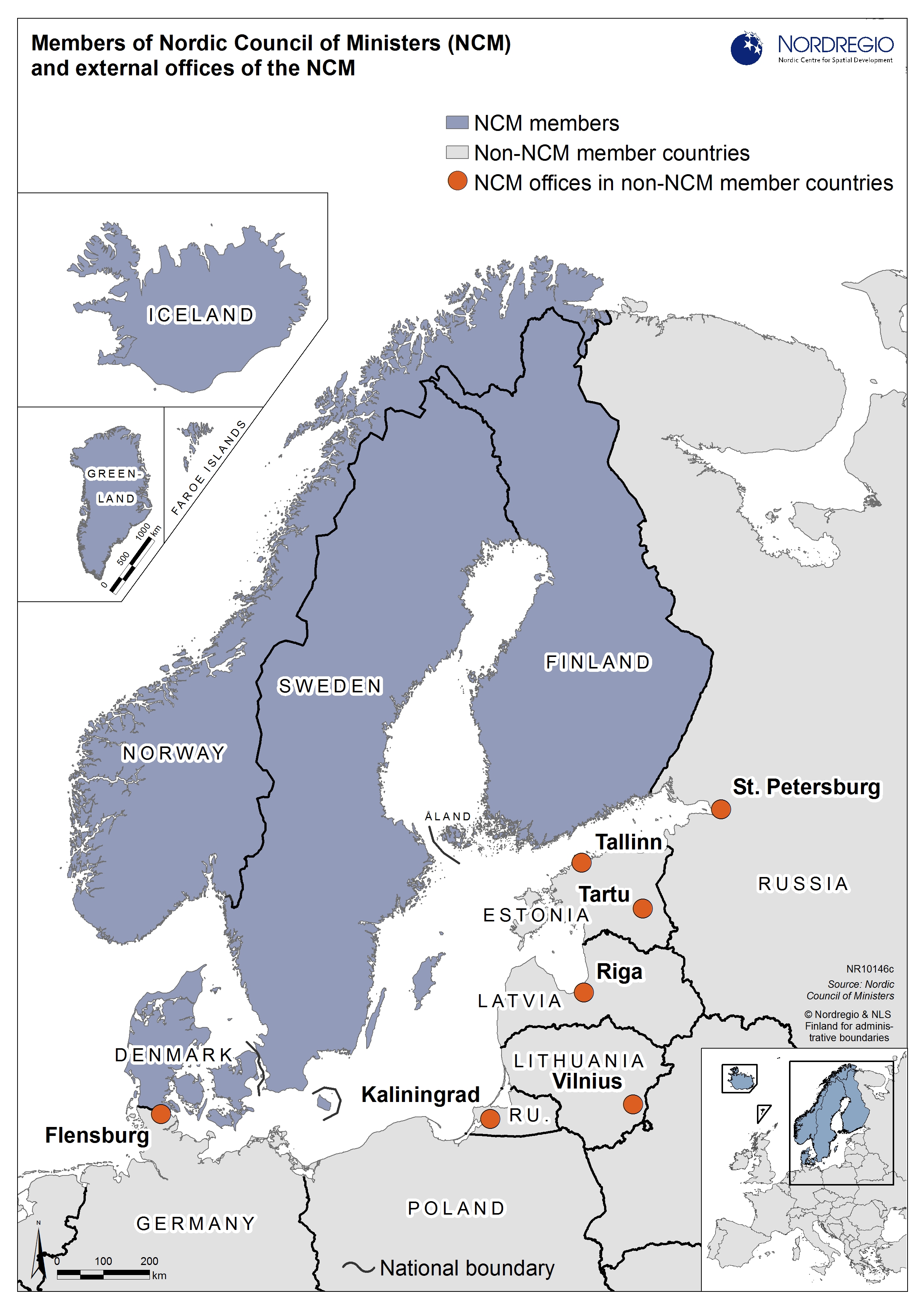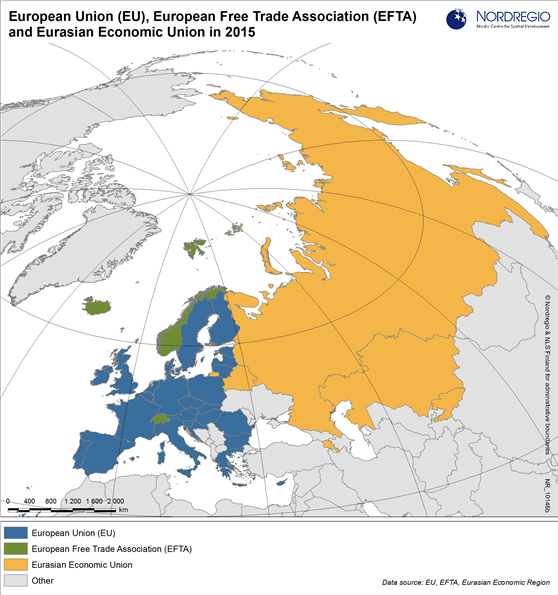23 Maps


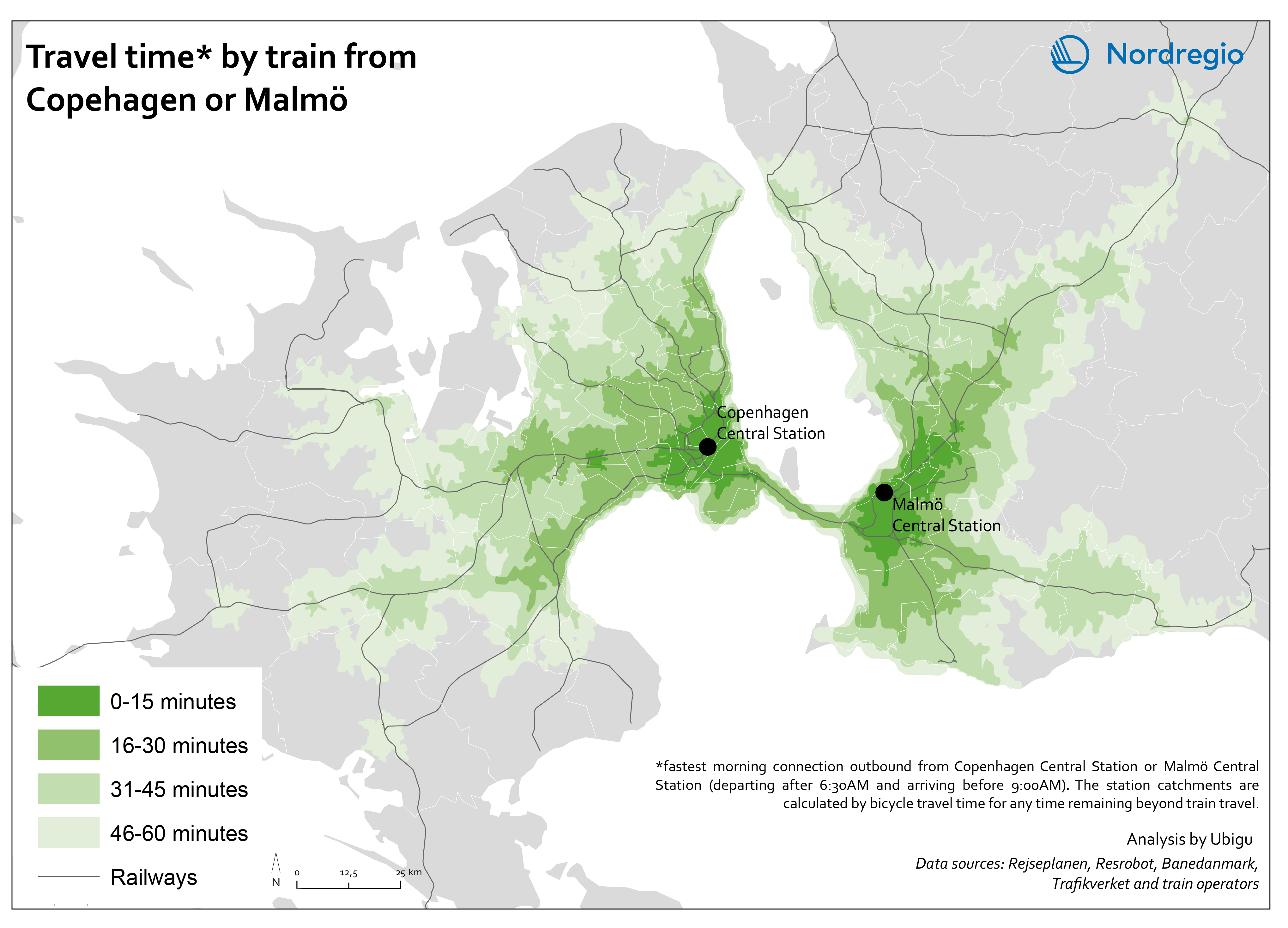
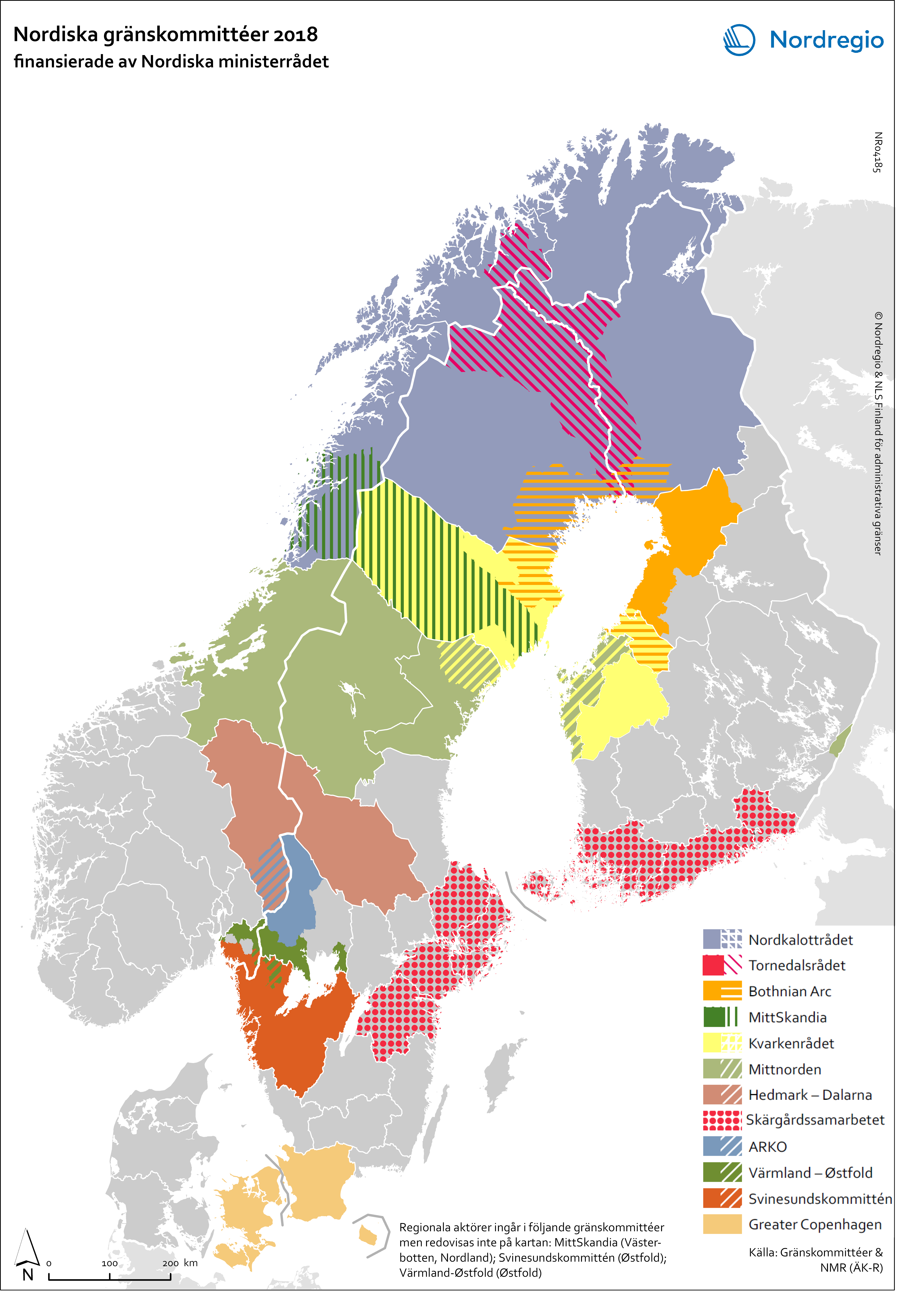
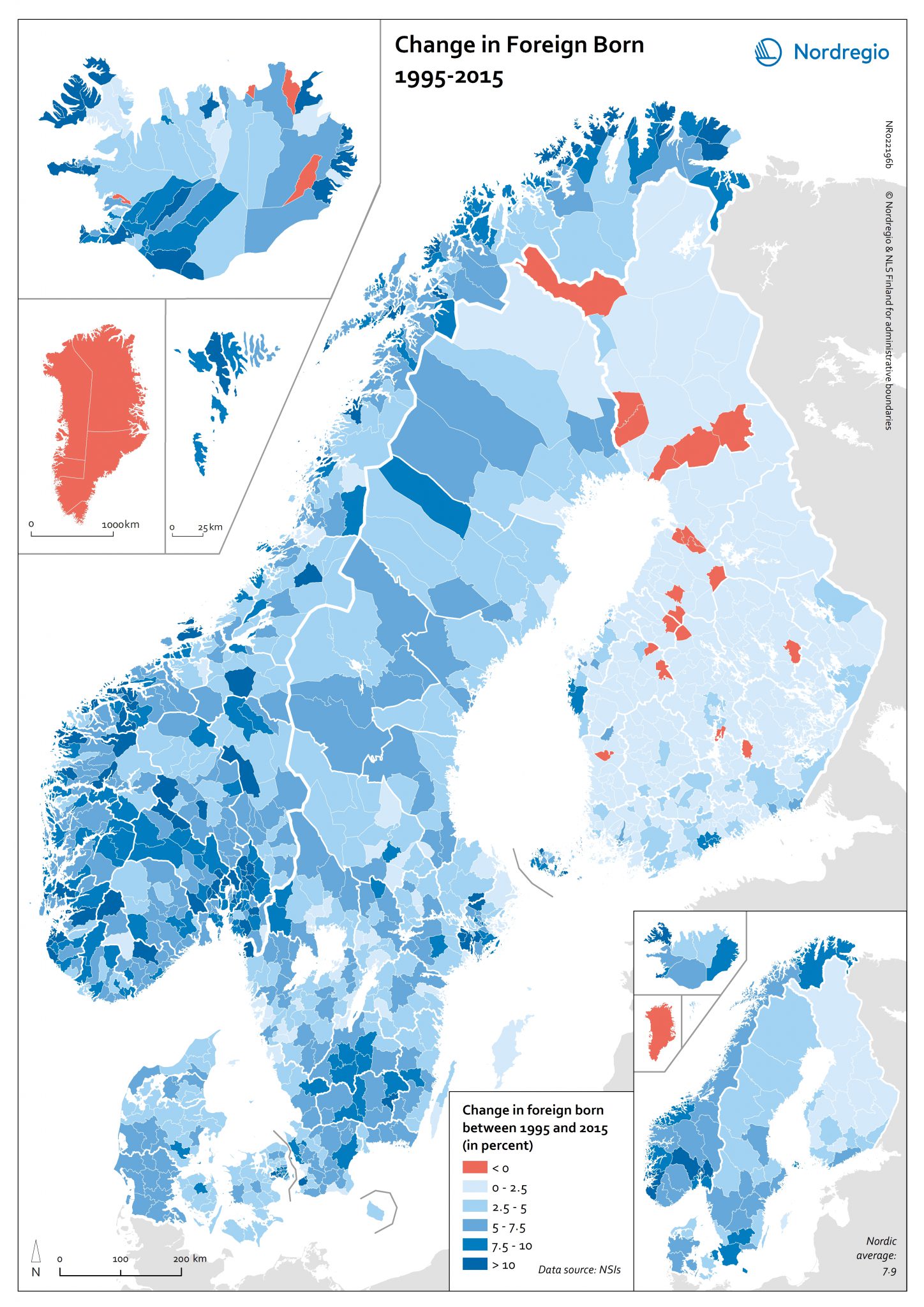
Change in Foreign Born 1995-2015
This map shows the change in the foreign-born population in the Nordic municipalities between 1995 and 2015. The smaller map shows the change in the foreign-born population in the Nordic Regions between 1995 and 2015. The blue tones indicate municipalities or regions with an increase in their foreign-born population between 1995 and 2015. The darker the blue the stronger the positive change. The red colour indicates municipalities or regions with a decrease in foreign-born population between 1995 and 2015. There has been an increase in the percent of foreign born in almost every region in the Nordic Region. Over the past 20 years, the share of the foreign-born population in the Nordic Region has increased from 6.5% to 14.3%. On the national level, the increase has been fastest in Norway followed by Sweden. At the regional level, the increase has been fastest in Rogaland, Oslo and Akershus in Norway and in Suðurnes in Iceland. The only municipalities that have seen declines in the percent of foreign born are municipalities in Iceland and central and northern Finland outside the larger urban areas and across Greenland.
2018 February
- Demography
- Nordic Region

Transnational co-operation
Transnational Cross-border Programmes in Northern Europe for the period 2014-2020 (Interreg V B). The map shows the geography of the cooperation regions and areas in the implementation of the programmes, i.e. North Sea Region, Baltic Sea Region, and Northern Periphery and Arctic Region.
2016 January
- Arctic
- Europe
- Nordic Region
- Territorial cooperation
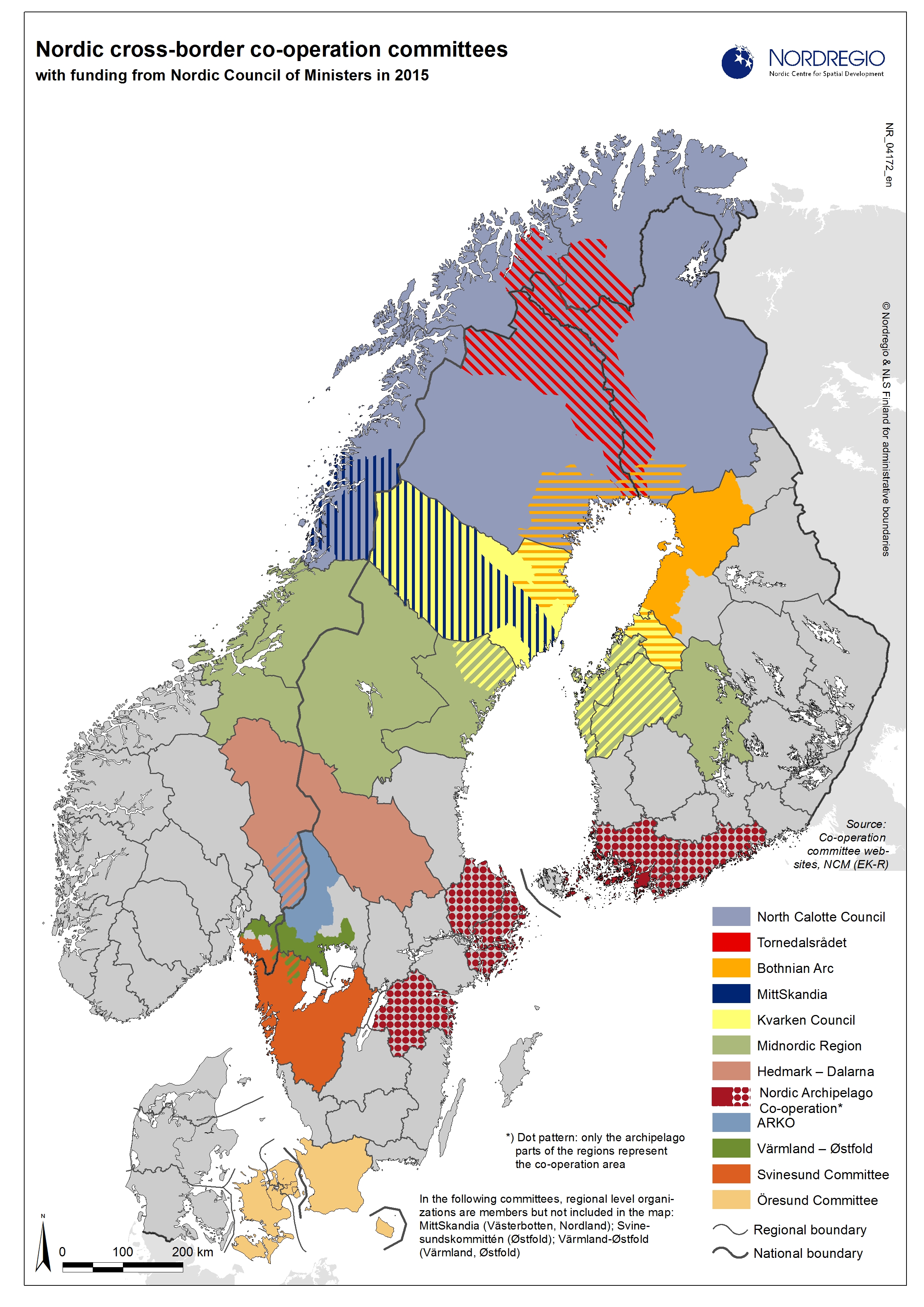
Nordic cross-border co-operation committees
Co-operation Committees funded by the Nordic Council of Ministers in 2015 The Nordic countries have a long history of cross-border co-operation. In parts, this co-operation has been carried out through regional cross-border committees which cooperate across the state borders. The activities of some of these committees have been going on since the 1960’s. The aim of the committees are increasing growth and development of the actual border region, building on the concept that bigger, dynamic and well-integrated regions will be able to retain and attract companies and people for further growth and development.
2015 February
- Nordic Region
- Territorial cooperation

